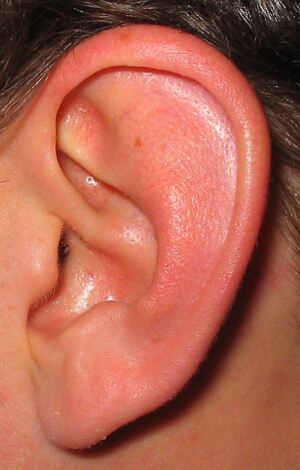Aural Trumps Oral for Ear Treatment
by
A.F. Hutchinson, Copywriter | November 20, 2009

Microfluidic implants
may provide
an earful
A game-changing microfluidic implant is poised to deliver drugs to precise areas of the body that pills, injections, and other implantable delivery systems are unable to reach.
Researchers at the Charles Stark Draper Laboratory in Cambridge, Massachusetts have developed an implantable drug delivery device that combines therapeutic MEMS and active fluid controls.
The tiny device is designed to effectively move infinitesimal amounts of medication to complex spaces. The cochlea, which is separated from the bloodstream by a layer of epithelial cells, is one of those areas that the device is designed to reach.
According to design project lead Jeffrey T. Borenstein, Ph.D, "The ear is a classic opportunity for drug delivery because of the barriers and the difficulty in reaching those targets. Some of the diseases of the ear are diseases of balance, some of them are diseases of hearing, but in general, when you're trying to reach a target that it's really not possible to reach using an oral or injectable medication, the ability to introduce the drugs directly into the inner ear opens up all those avenues."
Borenstein and his colleagues have been working on microfluidics for nearly a decade, but only focused their development efforts on drug delivery in the past five years.
"This microfluidic system has really taken off, I think, because of the novelty of the approach and the ability of this system to overcome many of the problems that exist with currently available modes of delivery to the ear," he said.
Draper's approach to the implantable technology takes micro scaling an important step forward, incorporating fluid dynamics, flexible construction and a sensitive "push-pull" infusion system that balances therapeutic and natural body fluids to maintain consistent volume and eliminate damage to the ear.
A flexible micropump controls the fluid circuit and enables the drug to travel to a precisely defined target. The implant is constructed with laser-machined polymide components, which are flexible but less permeable than the silicon rubber materials commonly used in rigid implants.
Two batteries will power the device; a minuscule one inside the ear and another that can be tucked underneath the outside of the ear, much like a hearing aid. When refined, the outer power source will be about the size of a AAA battery.
Borenstein and his colleagues at Draper are collaborating with clinical researchers at the Massachusetts Eye and Ear Infirmary, who have completed successful in vivo trials using guinea pigs.
Noting that human clinical trials are still several years away, Borenstein believes that the technology will be available for commercialization sometime in the next five years.
The product's rollout will be staged, Borenstein predicts, because of the large number of diseases that could be treated with the device. "Some of these diseases are present in a relatively small patient population, and some of them, like sensorineural hearing loss, have an enormous patient population that measures in the tens of millions. But for diseases like sensorineural hearing loss, you really don't have a drug available today to treat the disease," he points out. "The reason I would say that this is possible over the next five years is that once this technology is more developed, you're going to be able to implement it in some of these other disease areas even before the drugs are completely developed for sensorineural hearing loss."
